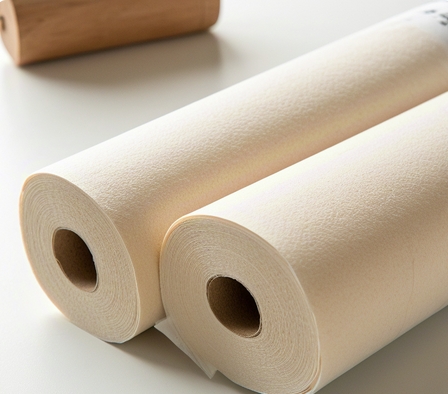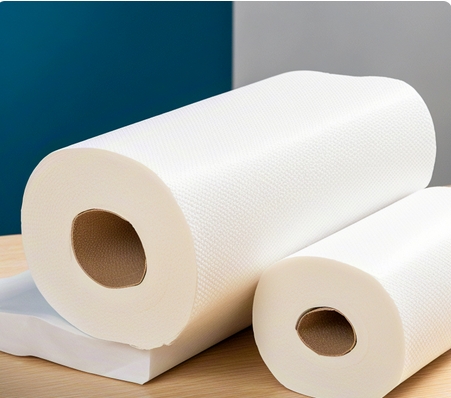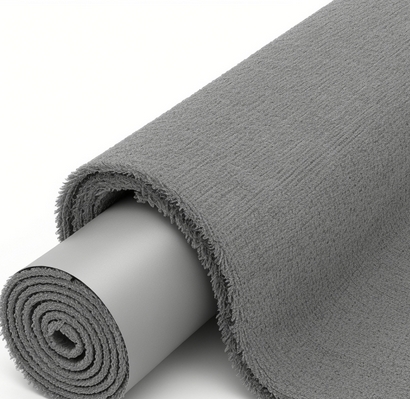Language

Industrial wipe selection guide: professional scenario-based solutions
In an industrial production environment, scientific selection of wipes directly affects cleaning efficiency and product quality. According to the requirements of ISO 14644-1 clean room standard, we divide the selection strategy of industrial wipes into two dimensions, and provide professional selection suggestions based on specific application scenarios.
1. Principles of adaptation for application scenarios 1. Pollutant type adaptation is suitable for aqueous solutions (such as coolant, cleaning agent), and it is recommended to use microfiber dust-free cloth with a water absorption of more than 10g/m2. When dealing with oily substances (cutting oil, lubricating oil), oil-resistant and modified polyester fiber material should be selected, and its oil absorption can reach 8–10 times its own weight.
2. Chemical compatibility verification When using organic solvents such as isopropanol (IPA) or acetone, the solvent resistance of the wipe cloth must be confirmed. It is recommended to use an electrostatic dissipation wipe cloth tested by ASTM D543, which has a chemical corrosion resistance of more than 40% higher than that of ordinary materials.
3. Cleanliness control requires that dust-free cloth produced in Class 100-level clean room should be selected for semiconductor manufacturing, optical component processing and other scenarios. This type of product adopts laser edge sealing technology, and the dust drop is controlled at 0.3μm particles ≤100 pieces/m², which complies with the IEST-RP-CC004.3 industry specifications.
4. When material safety certification involves coating or bonding processes, silicon-free products that have passed Ross certification must be selected. It is recommended to check the Material Safety Data Sheet (MSDS), focusing on the need for silicone oil residue to be lower than the 10ppm detection threshold.
5. The visual management system is recommended to adopt a three-color management system: white is used for equipment surface cleaning, blue is used for oil stain treatment process, and green is used for optical component maintenance. This color separation scheme can improve cleaning efficiency by 30%, effectively avoiding cross-contamination.
6. It is recommended to choose a 12-layer hydros puncture process product for use cycle planning, which has a wear resistance of up to 50 cycles. The reusable type should choose a knitted structure with a weight of ≥80g/㎡, which can still maintain 90% liquid absorption after 20 cleanings.
7. On-site operation optimization plan 1. The distribution method is used to configure a fixed-point workstation. It is recommended to use a 300mm diameter coiling system, and the automatic cutting device can improve the use efficiency by 30%. Mobile work is recommended to use a 9x9-inch standard size in independent PE packaging, with an ergonomic folding design that is easier to carry.
8. Dimensional efficiency matching According to fluid mechanics, the 9x9 inch (23x23cm) specification can achieve 96% effective contact surface when wiping the surface of the equipment. For tight space maintenance, it is recommended to wear a 7x7-inch folding dust-free cloth, which has a right-angle locking design that can accurately clean the gaps of 0.5mm.
9. Pollution risk prevention and control In a clean environment of Class 1000 or above, a double-layer vacuum-packed dust-free cloth product must be selected. This type of packaging is finalized through ISO level 7 clean room, and the particle growth rate can be controlled within 24 hours after opening.
10. Analysis of continuous optimization of production environment demand (I) Workplace image upgrade plan In the process of implementing the 5S management system, the selection of industrial wipes directly affects the visual management effect of the workshop. For example, a precision electronics factory not only increases the visualization of tool positioning by 40% by using solid color non-woven wipes, but also receives high praise from the ISO certification audit team. It is recommended to give priority to professional-grade wipes that are resistant to pilling and low floss loss, and visual management is achieved with standardized storage devices.
Operational line efficiency improvement strategy In response to common walking waste problems in automotive coating workshops, Toyota Production System (TPS) research shows that setting up an anti-static wipe storage cabinet within 1.5 meters of the spray station can reduce the ineffective movement time of employees by 62%. At the same time, a closed solvent storage tank that meets OSHA standards should be selected, combined with a polyester microfiber wipe cloth with a liquid absorption rate of up to 600%, to achieve the dual goals of reducing the exposure risk of hazardous substances and improving operating efficiency.
Waste cost control practice When dealing with waste wipes in the semiconductor industry that exceeds 3 tons per month, the cleanable aramid fiber fabric shows significant advantages - it still maintains a 92% cleaning effect after 50 high-temperature sterilization. For food processing where disposable products must be used, it is recommended to choose a biodegradable wiper that meets the ASTM D5511 standard. The decomposition rate of this type of product can reach 85% within 30 days in an anaerobic landfill environment, which is 60% lower than that of traditional chemical fiber products.
The professional procurement team of industrial wipe selection decision model should establish a three-dimensional evaluation system:
1. Functional dimensions: substrate permeability (ASTM D5725), chemical resistance (ISO 1817)
2. Economic dimensions: single use cost accounting, full life cycle cost analysis 3. Compliance dimensions: REACH regulatory certification, medical-grade EN ISO 13485 standard
It is recommended that the company conduct on-site working condition simulation tests before making a decision, focusing on verifying the performance of the wipe cloth under specific process parameters (such as pressure 35psi, temperature 80℃).
Tags:
RELATED RESOURCES

A must-read for precision manufacturing! Industrial wipe paper cleanliness improvement solution and
As an important consumable in the intelligent manufacturing system, industrial wipe paper is redefining indust......
More

Industrial wipe paper cleaning tips: 12-inch wafer adsorption efficiency increased by 98.7%
As a key cleaning medium in modern manufacturing, industrial wipe paper continues to promote process innovatio......
More

Industrial Wipes Selection Guide: 10 Standards Analysis and Application Scenario Illustrations
In the field of industrial cleaning, the choice of professional wipe materials directly affects production eff......
More

Industrial Wipes: A Specific Guide to Materials and Uses
Explore industrial wipes, their uses, materials, and the industries that benefit most from their specialized c......
More
Related Products
Room 101, Building 1, Angeer Factory, No.4, Hetian Road, Shatian Community, Kengzi Street, Pingshan District, Shenzhen, Guangdong, P.R. China 518122
info@wipestar.com
+86-755-89616775
+86-755-89616773
Related Products
RELATED RESOURCES

A must-read for precision manufacturing! Industrial wipe paper cleanliness improvement solution and
As an important consumable in the intelligent manufacturing system, industrial wipe paper is redefining indust.........
More

Industrial wipe paper cleaning tips: 12-inch wafer adsorption efficiency increased by 98.7%
As a key cleaning medium in modern manufacturing, industrial wipe paper continues to promote process innovatio.........
More
WIPESTAR
微信官方公众号